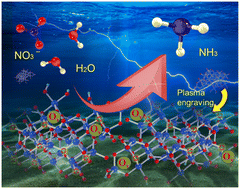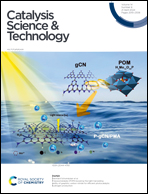Plasma-engraved Co3O4 nanorods with enriched oxygen vacancies for efficient electrocatalytic ammonia synthesis†
Abstract
Ammonia electrosynthesis, emerging as a promising alternative to the conventional Haber–Bosch process, has garnered increased attention. In this study, a one-step plasma-engraving strategy is employed to modify the surface microenvironment of Co3O4 nanorods for the electrochemical nitrate reduction reaction (NO3RR), leading to a remarkable increase in oxygen vacancies. The resulting V-Co3O4 exhibits an exceptional Faraday efficiency of 98.9% and a noteworthy ammonia yield of 27.5 mg cm−2 h−1, representing an improvement of up to 67.9% at −0.48 V vs. reversible hydrogen electrode (RHE) compared to untreated Co3O4. Theoretical calculations highlight the formation of the *N intermediate as a pivotal step, limiting the reaction rate during ammonia synthesis. The special electron state induced by oxygen vacancies plays a pivotal role in enhancing the adsorption of *N, thereby significantly reducing the energy barrier for this step. Our findings underscore the effectiveness of plasma engraving in tailoring catalyst surfaces for enhanced electrocatalytic performance in ammonia electrosynthesis.



 Please wait while we load your content...
Please wait while we load your content...